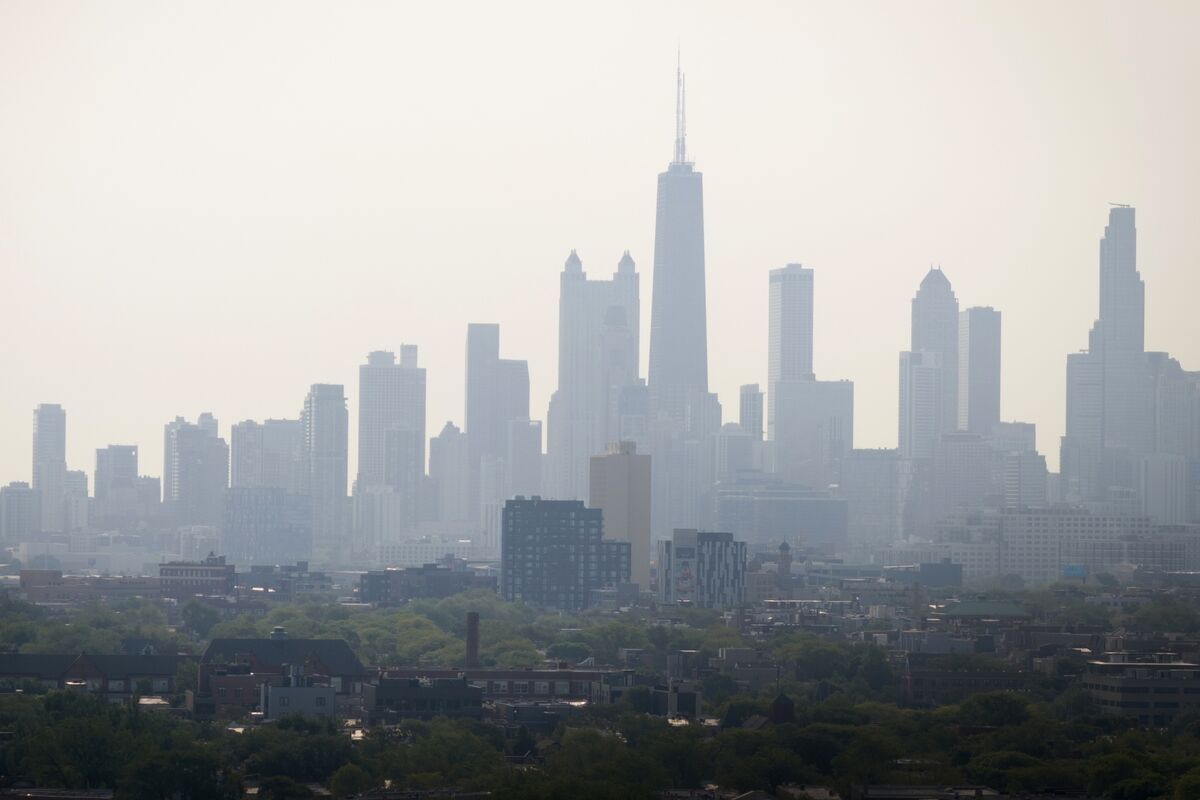Choking Skies Over New York as Canadian Wildfire Smoke Sparks Alarming Air Quality Concerns
Thick Haze Looms Over the Northeast as Smoke Drifts From Canada's Prairie Fires
New York is once again under an air quality threat as massive wildfires burning across the Canadian prairies send thick plumes of smoke sweeping across the northeastern United States. The result — a smoky haze that has already turned skies gray and triggered health warnings across several states.
From the Upper Midwest to the East Coast, millions of residents are breathing in polluted air as experts warn of worsening conditions through the week. The haze isn't just a distant problem from across the border — it's settling over rooftops, parks, and streets, visibly dulling the city skyline and raising serious health concerns for vulnerable populations.
What’s Causing the Air Quality Crisis?
A surge in wildfires across western and central Canada, especially in the prairie regions, is the root cause of the worsening air quality. Massive fires continue to burn through dry grasslands and forest areas, sending smoke hundreds of miles downwind. Meteorological patterns have funneled this smoke southward into U.S. states including New York, New Jersey, Pennsylvania, and Connecticut.
On Wednesday, starting at 11 a.m., several states issued air quality alerts that remained in effect through late evening. These warnings aren’t just about industrial pollution or vehicle emissions. Experts are sounding the alarm about high levels of fine particulate matter — microscopic pollutants in smoke that can penetrate deep into the lungs and even enter the bloodstream.
Who’s Most at Risk?
Children, elderly individuals, and people with pre-existing respiratory or cardiovascular conditions are especially vulnerable. Even short-term exposure to elevated levels of smoke can trigger asthma attacks, breathing difficulties, chest discomfort, and eye irritation. For many, the discomfort can be immediate. For others, the long-term health effects of repeated smoke exposure remain a growing concern.
Public health officials have advised residents to stay indoors as much as possible, avoid strenuous outdoor activities, and use air purifiers or wear N95 masks when necessary. Schools, senior care centers, and hospitals are on high alert, especially in urban centers where pollution levels tend to concentrate.
How Bad Is the Situation?
While urban pollution remains a constant contributor to poor air quality, the smoke from Canada’s fires has dramatically worsened the situation. The sky across many areas appears unusually hazy — a result of fine soot particles suspended in the atmosphere. Meteorologists expect this high-altitude smoke layer to persist until a system of rain, forecasted later this week, helps to clear the air.
“The smoke is definitely contributing to a noticeable dip in air quality,” said a meteorologist with the national weather services. “Until we see significant rainfall or a wind shift, conditions will likely remain challenging.”
The Bigger Picture Behind Canada’s Wildfires
The wildfire season in Canada, particularly in the province of Alberta, is already among the most aggressive in recent memory. Dry conditions and high winds have fueled flames that have scorched vast tracts of land, leading to emergency evacuations and interruptions to oil and gas production.
While some fires have been slowed by recent rainfall, others continue to burn with intensity. The scale of this year’s wildfire activity raises concerns not just for Canada’s environment and economy, but for the health of neighboring regions affected by transboundary smoke.
What Can You Do to Stay Safe?
If you’re in an area impacted by the smoke, here are some expert-backed recommendations to protect yourself and your family:
Limit Outdoor Exposure: Avoid outdoor exercise and extended time outside, especially during peak smoke hours.
Use Air Purifiers: Invest in HEPA-filter air purifiers to keep indoor air clean.
Seal Your Home: Close windows and doors, and consider using weather stripping to prevent smoke from seeping in.
Monitor Air Quality: Use air quality apps or official websites to track local AQI (Air Quality Index) levels in real time.
Wear Protective Masks: N95 or equivalent masks can filter out harmful particles, especially during necessary outdoor travel.
Looking Ahead
With wildfires expected to remain active in Canada and the potential for shifting winds, air quality across the northeastern U.S. may remain volatile. Rain systems could offer temporary relief, but the broader environmental pattern — intensified by climate change — suggests that smoky summers may become more frequent in the years to come.
For now, residents are urged to remain vigilant, take precautions, and stay updated on public advisories as New York and surrounding states navigate yet another wave of polluted skies.
